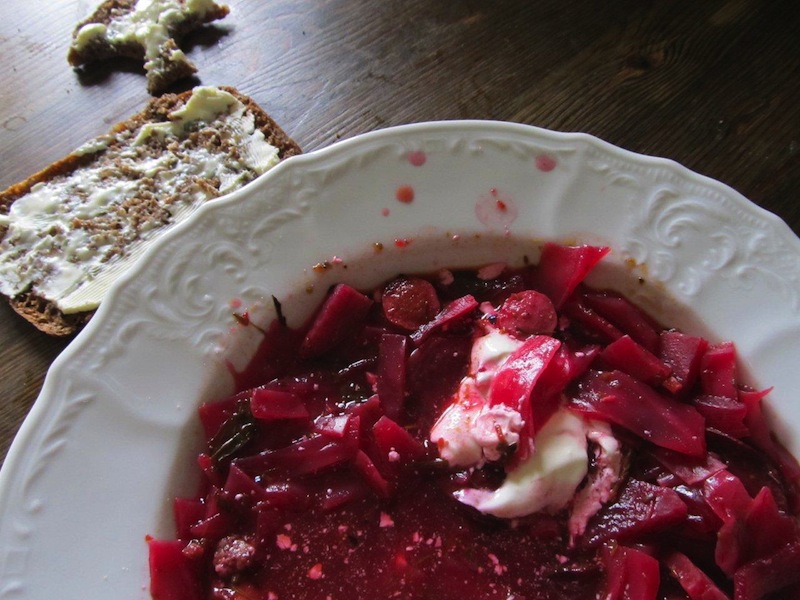A second kulinaarne tõuge or culinary push came on a recent morning, when a sidebar of “Must Reads” on the Toronto Star's webpage lured me to continue reading in The Grid about “Toronto's tastiest new tacos”. “Six months ago, we thought Toronto had reached maximum taco saturation. We were wrong,” wrote Jacob Rutka in the Food and Drink section. Clicking “the gallery above for some of the newer iterations on menus across the city,” is what really opened my eyes. The descriptions of the 16 slightly sloppy, albeit nämmi (yummy) looking Mexican sandwiches which appeared before me, included many ingredients I'd never, ever heard of.
(For the record, since I've encountered countless Estonians abroad making this slip: it's not “Meksiko” in Estonian, but Mehhiko, akin to the inhabitants own pronunciation. Similarly not “Hungari”, but Ungari; not “Kroaatia”, but Horvaatia.)
I wasn't even slightly aware of Toronto's taco saturation situation, even though I visited within the last 6 months. I guess that's what happens when you've stuck to the humble likes of hakk/liha/kaste (ground beef sauce) and pallid kartuli/supp (potato soup) for too long, don't follow gourmet websites or visit chichi restaurants when abroad.
I'd actually heard of chipotle, but only because I looked it up after reading the American restaurant chain of the same name was one of Michelle Obama's favourites. I initially assumed it was a sausage (chorizo's brother), but it's a tuline punane pipar – fiery red pepper. I know of crème fraîche thanks to a hilarious parody on South Park. But queso fresco? Pico de gallo? Lime crema, napa cabbage, tomatillo, salsa verde, pickled daikon, Sriracha mayo and fresh jicama on a taro-root shell? Excuse me, should I know what those are? Do you?! It's a far cry from Taco Bell (the fast food chain), that's for sure. These babies range from $8 to $15 for two with salad.
Reading from the other side of the world, it's easy to feel like everyone else knows the score but you. But just in case you're not a trendster either, I'll reveal my findings and attempts to uncover some Estonian equivalents. Queso fresco is a mild, traditional Mexican cheese, pico de gallo (“rooster's beak” in Spanish) is a fresh, uncooked condiment (in this case salsa), whose main ingredients include chopped tomato, white onion and chilis (typically jalapeños or serranos). Take away the tšilli/pipra kaunad and I would call it tädi Helvi salat, straight out of Tootsi, Pärnumaa. She too made pioneering culinary inroads, introducing an old-world kind of salsa fresco to relatives in Toronto back in 1979. And tädi Helvi's maiden name was Kuke, which means “rooster's”. Pico de gallo = rooster's beak. Coincidence? No way.
Salsa verde differs from the former by being green and is made with a Mexican relative of a tomato, the tomatillo (pronounced “toe-mah-TEE-yo”), which looks like a little green tomato covered with a husk. Tomatillo in Estonian is mehhiko füüsal (from the Latin Physalis) or mehhiko tomat. Try your own salsa verde by mixing roasted mehhiko füüsal, tšilli/piprad, laimi/mahl, koriander and onion . Are you following? It turns out napa cabbage is simply a type of chinese cabbage (hiina/kapsas), an old new stand-by in Eesti, where slaw has been king since the beginning of time.
Daikon actually makes an appearance in the local cafe's cookbook I'm translating – valge ehk jaapani redis – white or Japanese radish. As for crema, it's the Mexican version of crème fraîche (värske ehk prantsuse koor) and lime crema can even be made in Estonia lickedy-split by mixing majonees, hapu/koor, laim, green onions and koriander (aka cilantro). And finally “fresh jicama on a taro-root shell”? Jicama is a crispy, sweet root vegetable resembling a turnip in appearance that been cultivated in South America for centuries and is quite popular in Mexican cuisine. Taro is cultivated in the tropics for its large edible rootstock, which has a sweet nutty flavour when roasted, baked or boiled. Juurikas juurikal – a root on a root – good for you.
Most of the elite tacos I admired on screen while sipping my morning kohv did not have a morsel of ground beef in sight, but headlined fish: smoked marlin (marliin), tiger shrimp (krevetid), spiced and fried Ontario pickerel (haug), caviar (kala/mari), not to be confused with calamari – kalmaar – squid in Estonian. There were cod (tursk), tempura halibut (hiid/lest) and barbecued eel (angerjas) tacos. They hailed from tony Bay and Queen St. restos as well as food trucks.
A few meatier things made it to the taco photo session too, like pulled wild boar. Sikutatud mets/siga? Probably not, but it sounds fun. And beef tongue, which is no stranger to Estonia. Even lemongrass is no longer a stranger to Estonia. Sidrun/hein. Others here are in the know about Sriracha vürtsikaste (spice sauce), the ketšup of Tai (i.e. Thailand). Now I am too. Last time I was at Turuköök in Kuressaare, I was given a jar of no, not jam, but tšatni. Indeed, genuine Saaremaa green õuna-hapu/kurgi chutney, which my Saaremaa mother-in-law would have no idea how to eat.
When mixing ingredients, it's often a challenge not to “miksi” your languages, especially when fusion cuisine like Korean tacos are on the plate. But it's always worth the effort to cleanse your palate. Both sorbet and/or Estonian work well.
To feast your eyes on what I've described, go to www.thegridto.com/life/food-drink/tacos-the-second-wave




